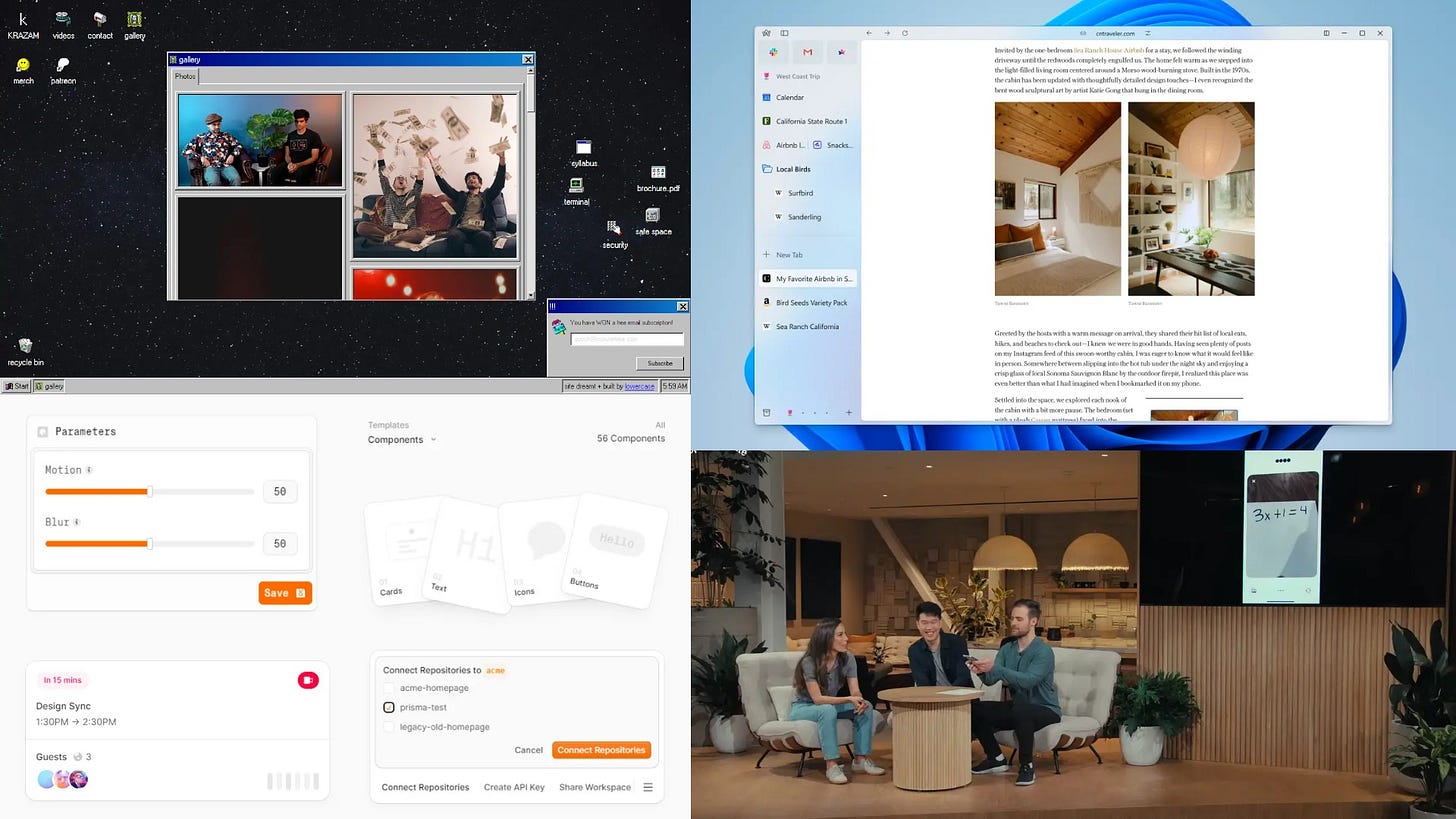Issue 100 🎉
Hotel labels in space debris
Hello, dear readers, that’s issue 100 is already out! Thank you very much to all of you for reading this digest and making it possible! 👋
In this issue, among other things:
What is the value and necessity of a craft approach in design
Why zoomers in the US don’t understand handwritten fonts
UX framework for designing AI interfaces
What is diary research and how to use it
Why small startups create the most inspiring product design
A brief overview of the capabilities of GPT-4o (Omni), the new breakthrough OpenAI model
A bot from Stability AI for working with all AI of the Stable line
An impressive online map of satellites and space debris around the Earth
…and much more!
Enjoy reading!
🗞 News and articles
A curious article about how the refusal to study writing in schools in 45 US states led to the fact that part of Generation Z cannot read curly handwritten letters. Having discovered this problem, the authorities of some states decided to return the training to the register.
The authors point out that modern brand design is increasingly abandoning handwritten fonts and losing its emotionality. Most companies use a set of names in a simple grotesque way for the sake of readability.
Itay Dreyfus wrote about why the most inspiring and authentic product design today is created by small niche and independent startups.
He says that any new industry inevitably goes from bold experiments and discoveries to systematization and thoughtful growth for profit. Because of this, the once bold and diverse startup interfaces have become monotonous and predictable solutions of now large companies.
As a source of inspiration, China suggests paying more attention to new startups, indie companies and small design teams. At the end of the article, he compiled a small list of examples.
The GenAI Compass: a UX framework to design generative AI experiences
Vincent Koch has released a UX framework for designing AI interfaces in various products. His goal is to make working with AI such that it enriches rather than complicates interaction with digital products.
In the guide, Vincent describes in great detail how to consistently introduce the user to the capabilities of AI, how to inspire and earn their trust, how to personalize the experience and much more.
Diary Studies: Understanding Long-Term User Behavior and Experiences
Diary study is one of the methods of qualitative research aimed at studying lifestyle and user experience in dynamics. Such studies last from a few days to several months or even longer.
NNGroup has written in detail about such studies. They talked about how they differ and what they can be, what are their advantages over other types of research, when they need to be conducted, how to collect and analyze data, what tools will be needed and much more.
Craft. On dedication and love for the invisible work
The Doc edition has released a selection of succinct definitions and quotes about the craft approach to work. They talk about its benefits, why it is important and why everyone should use it.
A few thoughts from the article:
Craft is the creation of something with dedication, skill and ingenuity. It is the desire to make things better, regardless of their scale and significance.
Craft is more suitable for small, focused groups of people who share the same vision.
The craft does not require innovation, but constant study of the industry and honing its techniques
The craft is iterative. Mastery in it is achieved by repetition and accumulation of experience
The skill is shown in the details. For example, in precisely selected headings, in careful alignment of text in slides, or in scrupulous writing
The quality of large processes consists of attention to smaller ones. For example, a cook can take an extra minute to thoroughly peel vegetables, and a designer can sort files.
New technologies
OpenAI has introduced GPT-4o (Omni), a new free multimodal LLM that has already made a lot of noise. Its capabilities really look impressive.
Technical features:
It is trained on text, images and audio, which allows you to fully unlock multimodal capabilities
The voice assistant understands and conveys emotions. He can joke and even sing
The delay in the conversation has dropped tenfold compared to previous versions. The response rate is as close as possible to a dialogue with a real person
Understands real-time video, and in the macOS application will be able to recognize the broadcast of the screen. For example, in this mode, the neural network will be able to explain the code
The model is twice as fast and cheaper than the GPT-4 Turbo. Writes code ten times faster than a regular GPT-4
At the Chatbot Arena, the model has no competitors and leads by a wide margin in 57 ELO on general tasks and 100 ELO on code
Access and plans:
During the first month, the model is available even to free users. They can also use Code Interpreter and GPT Store
Added separate tokenization for 50 languages. Now, for some languages, you need 4.4 times fewer tokens. For example, in Russian, the model is 3.5 times cheaper than the previous version
ChatGPT users have already started to be given access to the model. The API is available to developers
Conversational mode will be available to subscribers with the Plus plan in the coming weeks
Audio and video capabilities are still given to limited groups of users, the desktop application will be released later
A complete 26-minute recording of the presentation. The official post with updates. A message from Sam Altman— CEO of OpenAI.
Keep reading with a 7-day free trial
Subscribe to bezier.design to keep reading this post and get 7 days of free access to the full post archives.









